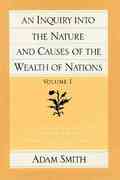Question
The Government of Canada would like to preserve a piece of land along the North Shore of Lake Superior as a wilderness park. The land
The Government of Canada would like to preserve a piece of land along the North Shore of Lake Superior as a wilderness park. The land is currently owned by a First Nation Band. On behalf of the Federal Government, the Director of Parks and Recreation Canada is negotiating a deal with the Chief of the First Nation Band. The following options are being considered.
Option #1(a Short lease): Lease the land for next 20 years in return for a payment of $10 million, which will be paid at the time of signing the lease. The Government cannot change any attribute of this piece of land during the lease period.
Option #2 (a Long lease): Lease the land for next 50 years in return for a payment of $18.5 million, which will be paid at the time of signing the lease. The First Nation Band will develop one wilderness trail at no cost to the Govt. of Canada immediate after signing the contract under this option.
Option #3 (Purchase): Sell the land for $37 million, which will be paid at the time of transferring the ownership of the land. The Government can change any attribute of this piece of land after purchase.
The research economist at Parks and Recreation Canada estimated that in its current condition the land would generate $750,000 per year in benefits to hikers, hunters, bird watchers, and campers. The development of one wilderness trail under option#2 would lead the benefits to grow by 0.5%. If, however, 10 campsites and 5 new trails are developed at the cost of $750,000 immediate after purchasing the land and maintained at a cost of $150,000 per year, then the net benefits would grow at a rate of 2 percent per annum.
Assume that:
4
the lease prices in option #1 and in option #2 and the purchase price in option #3, represent the social opportunity cost of this land and the Govt. of Canada faces no capital constraint.
the nominal social discount rate is 5 percent, and the expected rate of inflation is 1.5%; and,
The benefits and maintenance costs are all measured in real dollars and accrue at the end of each year.
Use an appropriate Cost-Benefit Analysis to determine if the Government of Canada should exercise option #1, option #2 or option #3. Show the results of your systematic analysis and explain them to the director so that he/she can make an informed decision.
Step by Step Solution
There are 3 Steps involved in it
Step: 1

Get Instant Access to Expert-Tailored Solutions
See step-by-step solutions with expert insights and AI powered tools for academic success
Step: 2

Step: 3

Ace Your Homework with AI
Get the answers you need in no time with our AI-driven, step-by-step assistance
Get Started


